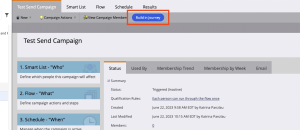I hear from numerous leaders who get fed up with the way direct reports can fixate on problems that the execs consider low priority. Sometimes the very same things that keep employees up at night are seen by senior executives as being in the normal course, nothing to be agitated about. These leaders want to avoid having the same discussion with their employees for the millionth time.
Here are a variety of road-tested suggestions that have been helpful for both leaders and employees. None of these approaches works all the time, but one or two of them, or a combination, may be helpful if you’re dealing with a similar situation.
Restart and Reframe the Conversation
It’s never effective to say, “Stop worrying about this — it’s low priority.” All that does, in your employee’s eyes, is confirm that you don’t care about the same things and you’re not going to help.
Leaders can start to reset the conversation by saying something like: “Thank you for bringing this to my attention. I can see that you’re quite concerned about it. It’s not our focus right now, because we need to put our energy into Project X. I do agree that we will need to address it, though, so let’s plan to get back to it.” (And if possible, give them a realistic timeframe).
Here, you’re differentiating between a problem that can be handled in the future and one that needs to be dealt with right now; you’re also pointing out that you have the authority to make that decision and that you’re taking responsibility for how and when their problem will be handled. (Just make sure you’ve built up enough trust credits with your team member that they have confidence in both your judgment and your word!)
If you see that the employee is not satisfied, you might even add that if conditions A, B, or C occur, they should let you know immediately. This helps them feel comfortable that you recognize that things could get worse. It’s like having your doctor tell you about the potential side effects of medications and letting you know what to do in case something worse starts to happen.
Reduce Their Stress
When a team member is of a more anxious nature, this approach might not be enough. They may not be able to stop feeling overwhelmed by the problem, worrying and catastrophizing about it, or fearing that they could be blamed and end up being disciplined for it.
Many leaders simply don’t have this kind of concern themselves, and therefore might never think to address it for their employees. In this kind of situation, it can be very effective to invest a little time upfront to make a plan with the employee, and formulate a joint commitment to addressing the problem. It’s worth your attention if it means the employee won’t return half a dozen more times with the same concern until it’s finally time to resolve the issue.
In circumstances like this, you might try: “I notice that you keep bringing up the same concern, even though I’ve said that we’ll handle it at another time. But I can see that it really worries you and I don’t want you to have this worry taking up so much of your headspace. Let’s try to address that worry, since it’s not practical to resolve this issue right now.”
Gather Evidence and Make a Plan Together
Ask the team member to list all the concerns they’re carrying around, and to detail, for each concern, the three major data points that show there will be damaging consequences if the issue is not addressed promptly. Encourage them to come back to you and make a real business case if they find a lot of factual evidence — if, for example, they can say, “I believe X will go wrong and cost the company a quarter of a million dollars.” You can commit now that if they have that evidence, you will evaluate it and decide then how to proceed.
And if the problem has to do with getting something done at the right time or in a proper way, help the employee look at the end stage, and then map out the necessary work or plan in reverse order. You can do it together at a whiteboard or make it an assignment for them to complete for you. That way, rather than having them rehearse the problem alone in the middle of the night in an uncontrolled way, freaking themselves out, they can rehearse the problem with you in a controlled way that actually lays out a plan for working on the situation.
Let the Details Support the Relationship
Sometimes the employee’s concern is around the quality of the work. Then you can ask them what outcome will seem like a successful resolution; then have them lay out the critical path, deliverables, any resource needs, etc. Encourage them to be very concrete and actually slot in all the details of what they need to do. Acknowledge every reasonable thing they propose. Praise them for producing a workable plan that they can document, and which you can both work from.
If it turns out, though, that they cannot come up with useful and appropriate plans, the real issue may not be that they worry too much. It could be that they don’t really know how to address the details of their job. In that case, you may be dealing with a competence issue, and need to provide skill training and more oversight. But for most employees, if you give them enough attention to help them formulate and commit to a forward-looking work plan, they’ll be more likely to feel that you support their progress. With the two of you working as a team, they will go about their business — all while learning better how to work with you in the future.
Note: If an employee appears to be suffering from anxiety rather than typical work worries, you may be most helpful by acquainting them with your organization’s mental health resources, including counseling through your Employee Assistance Program, teletherapy or digital tools, etc. Your Human Resources team should be able to help, and you can find additional resources here.
Business & Finance Articles on Business 2 Community(44)
Report Post






